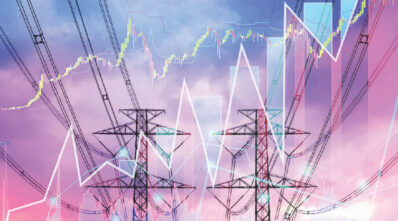Competition in power markets to aid in attaining energy goals
By EPR Magazine Editorial September 27, 2022 2:04 pm IST
By EPR Magazine Editorial September 27, 2022 2:04 pm IST

EX is India’s largest energy trading platform. Power trading platforms work the same way as any stock market where we can trade (buy and sell) energy. Power trading platforms, like many other power sector organisations, are governed by the Central Electricity Regulatory Commission’s (CERC) guidelines and regulations.
The primary distinction that arises between the trading of other commodities and electricity is because of the nature of electricity—unlike other commodities, electricity has to be consumed instantaneously as storage in large quantums and longer durations are still not an economical option. The physical transfer of electricity is governed by the State/Regional/National Load Despatch Centre(s) within the defined frequency, voltage, and other technical parameters.
Indian power markets 
More than 85 per cent of India’s power market is tied down under longterm power purchase agreements (PPAs), typically 25 years old. Distribution companies have signed these PPAs with a variety of central or state sector generators or independent power producers, either under a cost-plus regime or competitive bidding. The remaining market is a short-term market made up of exchange, bilateral, and imbalance (DSM) markets, with the exchange share gradually increasing over time. In addition to the value proposition of the exchange market ( primarily in collective segments) like competitive and transparent price discovery,liquidity, and payment guarantee, many policy and regulatory changes are aiding the growth of shortterm markets, primarily exchange markets.
The spot market and power market
Growth in the short-term market is a signal of maturity in a commodity. Many commodities have followed the same trajectory, and even in electricity, the same has been the scenario in many developed markets. The exchange markets, primarily DAM (RTM share gradually increasing), provide a reference point for prices (index) in electricity, which was not there till the introduction of this segment.Also, adhering to rigid longterm agreements is difficult for both buyers and sellers on account of uncertainties on demand and supply sides. Historically, India had only vertically integrated utilities in the electricity sector, which were then unbundled into separate generation, transmission, and distribution utilities. There have been numerous advancements and structural changes in the industry since the introduction of the Electricity Act 2003 and subsequent policies which enabled delicensing of generation, the introduction of competitive bidding in generation and transmission, the introduction of open access, etc which enabled increased short-term trade and the introduction of exchanges. Although many significant changes have happened in the sector, there are further developments expected to increase growth in energy markets.
The green market
To increase the renewable penetration at a time when the input costs are high and to promote RE, renewable power has been procured based on the FiT (feed-in tariffs) mechanism, where states have provided attractive tariffs for developers to set up their plants and guarantee the power procurement for periods ranging from 13 to 20 years. This has resulted in different states having different tariffs depending on their estimate of generation resource availability and other inputs. Further, a variety of incentives, including concessions or waivers in transmission and wheeling charges, cross subsidy, and additional surcharges along with banking provisions, have been provided to promote RE power procurement by commercial and industrial customers too. Subsequently, we have transitioned to a competitive bidding regime in the discom procurement,which has resulted in a significant fall in tariffs due to reductions in input costs, better technologies and competition. The next step in RE integration has been the introduction of green market segments, where markets are being envisaged as a tool for procuring RE power at the desired time and competitive rates, while also eliminating payment risk to sellers. Since its introduction, we have seen decent growth in the green market segments with participation from discoms, renewable generators, and open access customers.
We use cookies to personalize your experience. By continuing to visit this website you agree to our Terms & Conditions, Privacy Policy and Cookie Policy.